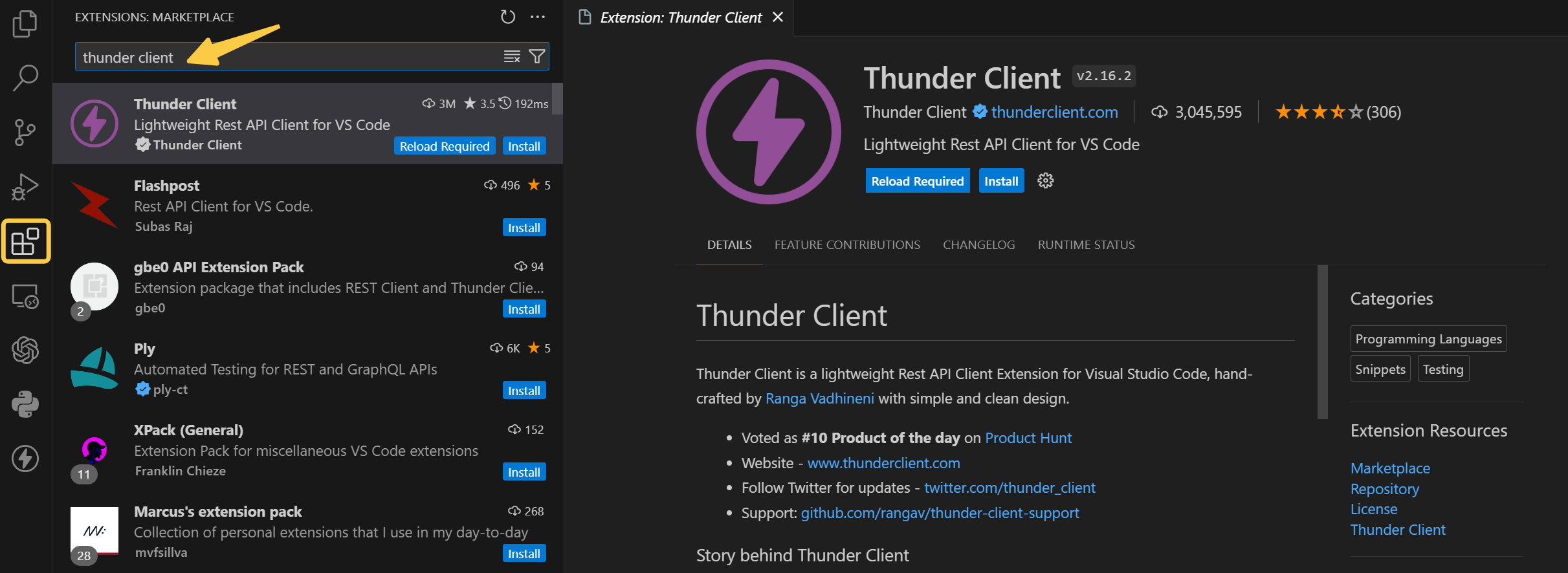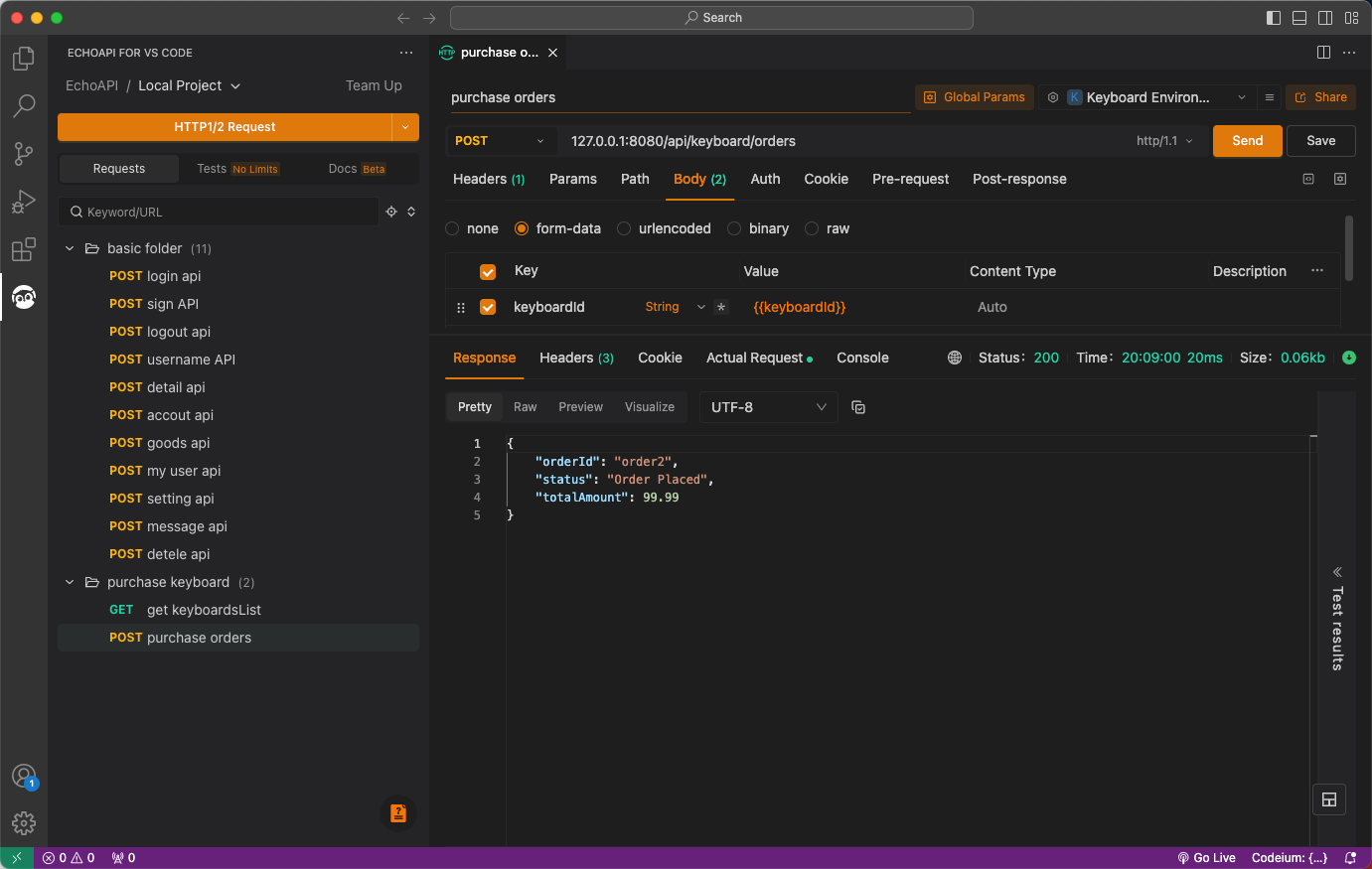Postman vs. Thunder Client: A Comparison of API Testing Tools and Alternatives
This article highlights the distinctions between Postman, Thunder Client, and EchoAPI for VSCode.
Postman vs. Thunder Client: A Comparison of API Testing Tools and Alternatives
When it comes to API testing, choosing the right tool is crucial. This article explores the differences and features of two popular platforms: Postman and Thunder Client. Postman has long been the go-to tool for API testing. However, as the tool has evolved, many users have reported performance issues, such as significant lag during startup and memory problems that impact their machines. Additionally, the limitations of the free version's collection runner and increasing costs for paid plans have caused freelancers and small teams to look for alternatives. This is where Thunder Client comes into play.
What is Thunder Client?
Thunder Client is a lightweight, user-friendly REST API testing tool integrated into Visual Studio Code. With its minimalistic design, Thunder Client has gained popularity as a robust alternative to tools like Postman.

Features of Thunder Client
- Lightweight and Simple: Thunder Client’s minimalistic design allows for easy navigation through REST APIs, providing a straightforward user experience.
- Collections and Environment Variables: Organize and manage APIs efficiently with support for Collections, and use Environment Variables for flexible testing.
- GraphQL Support: Easily craft and execute GraphQL queries alongside traditional REST API tests.
- Scriptless Testing: Thunder Client simplifies API response testing with a GUI, eliminating the need for complicated scripting.
- Local Storage: All your request data is securely stored on your device, allowing for quick access to previous requests without relying on external servers.
How to Use Thunder Client for API Testing
- Install: Open Visual Studio Code, search for "Thunder Client," and install the extension.

- Create a New Request: Open a project in Visual Studio Code and click on the Thunder icon in the sidebar to create a new request.

- Configure Request Details: Fill out the form in Thunder Client to set up your HTTP request.

- Select Request Method: Choose from methods like GET, POST, PUT, etc., then enter the URL, headers, parameters, and body as needed.

- Send the Request: Click "Send Request" to submit your API call to the specified endpoint.

- View the Response: The response from the server will be displayed, including headers, status codes, and response bodies.
Advantages and Disadvantages of Thunder Client
Thunder Client offers a range of benefits while also presenting some limitations that developers should consider.
Advantages:
- Speed: Thunder Client excels in quickly creating API requests and retrieving responses, making it ideal for local testing without internet dependence.
- User-Friendly Interface: Its intuitive design simplifies the testing process, catering to users who prefer a streamlined tool over more complex options like Postman.
- Efficient Request Handling: It efficiently processes large volumes of API requests without performance loss within Visual Studio Code.
- Visual Studio Code Integration: Thunder Client integrates seamlessly with Visual Studio Code themes, enhancing the user experience.
- Comprehensive Features: Beyond speed, it supports collections, environment variables, GraphQL, and test scripts, rivaling features found in more advanced tools.
Disadvantages:
- Limited Advanced Features: While suitable for basic needs, Thunder Client may not offer the advanced features required for larger or more complex projects.
- Dependency on Visual Studio Code: Its functionality is closely tied to Visual Studio Code, which may limit versatility for users of other environments.
- Learning Curve for Advanced Users: Those accustomed to feature-rich tools may find certain advanced functionalities lacking.
Can Thunder Client Replace Postman?
Not entirely. Thunder Client is effective for basic API testing but lacks some advanced capabilities of Postman, such as proxy configuration and complex scripting. For straightforward testing scenarios, Thunder Client is remarkably handy; however, for more sophisticated workflows, Postman retains an edge.
EchoAPI for VSCode:Alternatives to Thunder Client
While Thunder Client adequately handles simple testing, their aggressive pricing strategy introduced a year ago led many users to abandon it in search of alternatives. Among the various options, EchoAPI for VSCode has stood out for the following reasons:
- No login required
- Supports Scratch Pad
- Ultra lightweight
- 100% compatible with Postman script syntax
Additionally, unlike Thunder Client, EchoAPI for VSCode provides extensive capabilities for handling variables and scripting. Users can write pre-request and test scripts to set variables, chain requests, and implement complex logic, effectively simulating real-world API usage scenarios. Furthermore, EchoAPI for VSCode offers detailed control over proxy configurations, SSL certificates, and cookies, features that Thunder Client does not support as comprehensively.

It can be said that EchoAPI for VSCode is currently the best extension for Visual Studio Code and the best alternative to Postman. The EchoAPI team ensures that all its features are available to every user at no cost—and it commits to keeping it that way forever. Enjoy a fully-featured API development experience without worrying about hidden fees or paywalls!
Conclusion
In conclusion, selecting the right tool for API testing is essential for effective development. This article highlights the distinctions between Postman, Thunder Client, and EchoAPI for VSCode. While Postman remains a popular choice, its performance issues and cost concerns have prompted users to explore alternatives. Thunder Client offers a lightweight and user-friendly solution, perfect for quick and simple testing directly within Visual Studio Code. However, due to its aggressive pricing strategy and the more comprehensive demands of enterprise environments, Thunder Client has been increasingly abandoned by users. For those looking for a more robust option, EchoAPI for VSCode stands out as the superior choice. With its advanced functionality, including extensive variable handling, detailed proxy settings, and compatibility with Postman scripts, EchoAPI for VSCode provides a powerful alternative without any associated costs. Overall, EchoAPI for VSCode empowers developers with a complete API testing and development experience at no cost.









 EchoAPI for VS Code
EchoAPI for VS Code

 EchoAPI for IntelliJ IDEA
EchoAPI for IntelliJ IDEA

 EchoAPl-Interceptor
EchoAPl-Interceptor

 EchoAPl CLI
EchoAPl CLI
 EchoAPI Client
EchoAPI Client API Design
API Design
 API Debug
API Debug
 API Documentation
API Documentation
 Mock Server
Mock Server




